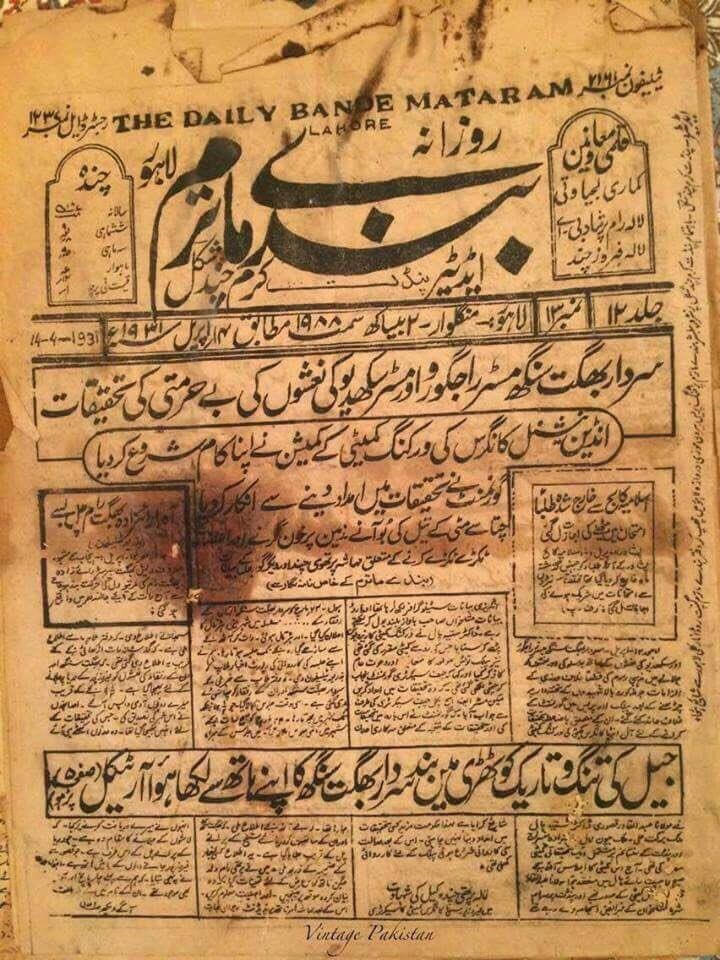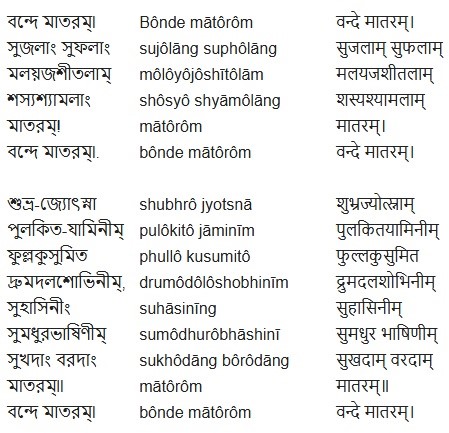Vande Mataram Gallery
“Vande Mataram” — ‘I Bow to Thee, Mother’ — is more than just a poem or a song; it is a soul-stirring tribute to the motherland, born from the pen of the great novelist Bankim Chandra Chatterjee. Written in the 1870s in Sanskritised Bengali and first published in 1882 as part of his revolutionary novel Anandamath, it became the heartbeat of a nation struggling for freedom from the colonial rule. It gained political significance when it was recited by none other than Gurudev Rabindranath Tagore at the Calcutta Congress Session in 1896. Famous musician Jadunath Bhattacharya gave tune to the song.
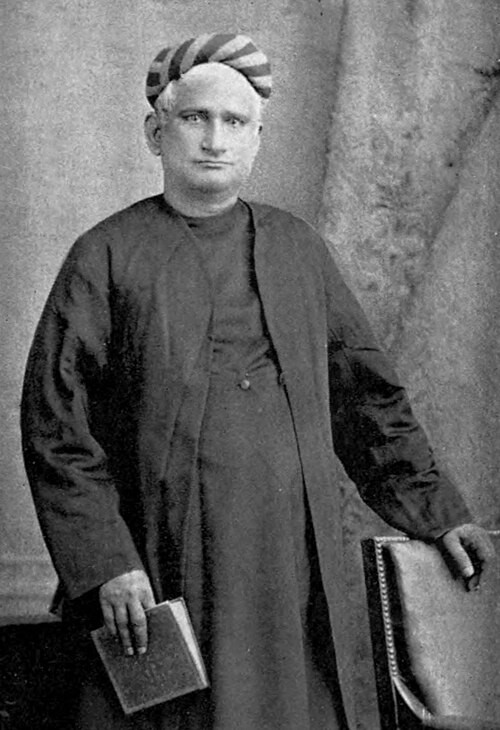
(this photo is in public domain, collected from Wikipedia)
With every verse, Vande Mataram awakened a sleeping spirit, igniting courage in the hearts of countless freedom fighters. It echoed through prison walls, protest marches, and whispered prayers, becoming a sacred mantra of resistance and unwavering devotion to Mother India. So powerful was its impact that the British, threatened by its force, banned the very novel that carried it. But the spirit of Vande Mataram could not be silenced. This song stood tall — adopted in 1950 as the national song of the Republic of India, a timeless song of love, sacrifice and patriotic pride.
On August 7, 1906, marking the first anniversary of the Bengal Partition a specially designed flag was hoisted in Kolkata’s Parsi Bagan area. Designed by Sachindra Prasad Bose and Hemchandra Kanungo, the flag was known as the ‘Calcutta Flag’. The flag had “Vandemataram” written in Devanagari script in the middle, having eight flowers at the top representing eight provinces of India (then) and the Sun and crescent moon with a star in at the bottom representing Hindus and Muslims respectively.
After a year of hoisting of the Calcutta Flag, another Indian national flag was designed ( similar to the Calcutta Flag) by freedom fighters Bhikaji Cama and Shyamji Krishna Verma, the design of the flag emerged as a powerful symbol of India’s struggle for independence from British rule. Vinayak Damodar Savarkar is also believed to have worked on it. This was aimed to promote Indian nationalism and support revolutionary activities against British rule.
Crafted in the context of rising nationalism, this flag which was hoisted by Cama in Germany, featured three horizontal stripes — saffron at the top, representing courage and the Hindus; green in the middle, symbolising faith and the Muslim community; and red at the bottom, denoting bravery and the rest of India. The design included eight blooming lotuses on the green stripe to signify India’s eight provinces at the time, while ‘Vande Mataram’ was inscribed across the saffron middle stripe. The bottom red
stripe showcased a half moon on one side and a rising sun on the other, reflecting the unity of Hindus and Muslims in the fight for independence.

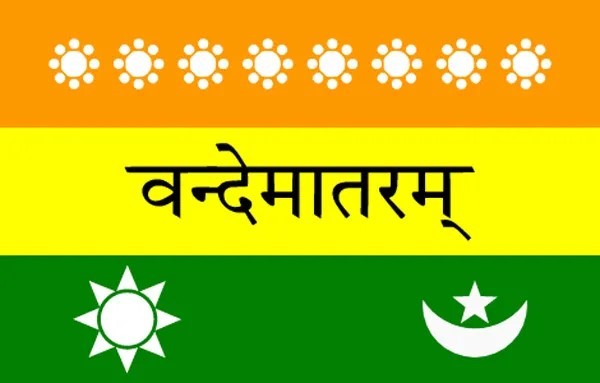
(this image is in public domain, collected from Wikipedia commons)

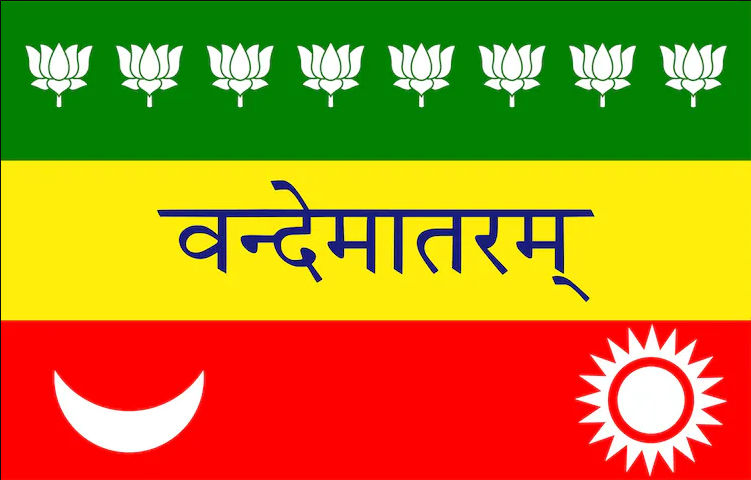
(this image is collected from a news report by India Today)

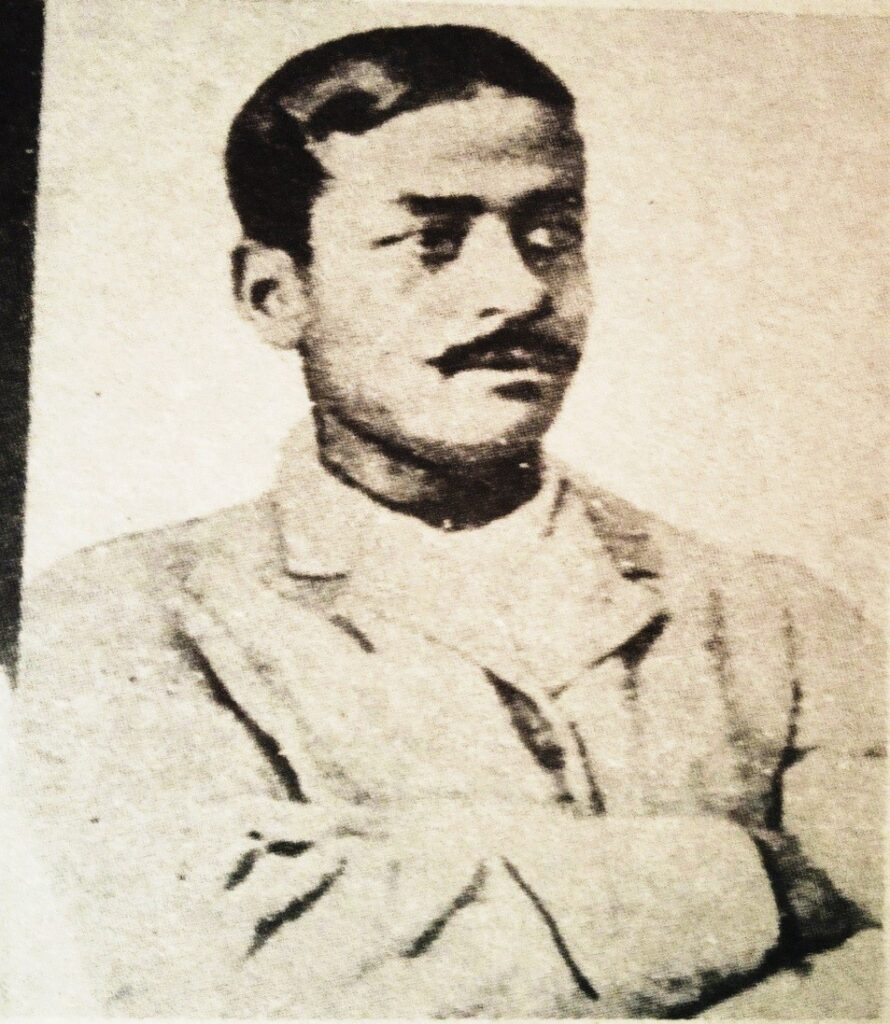
(this portrait is in public domain, collected from Wikipedia)

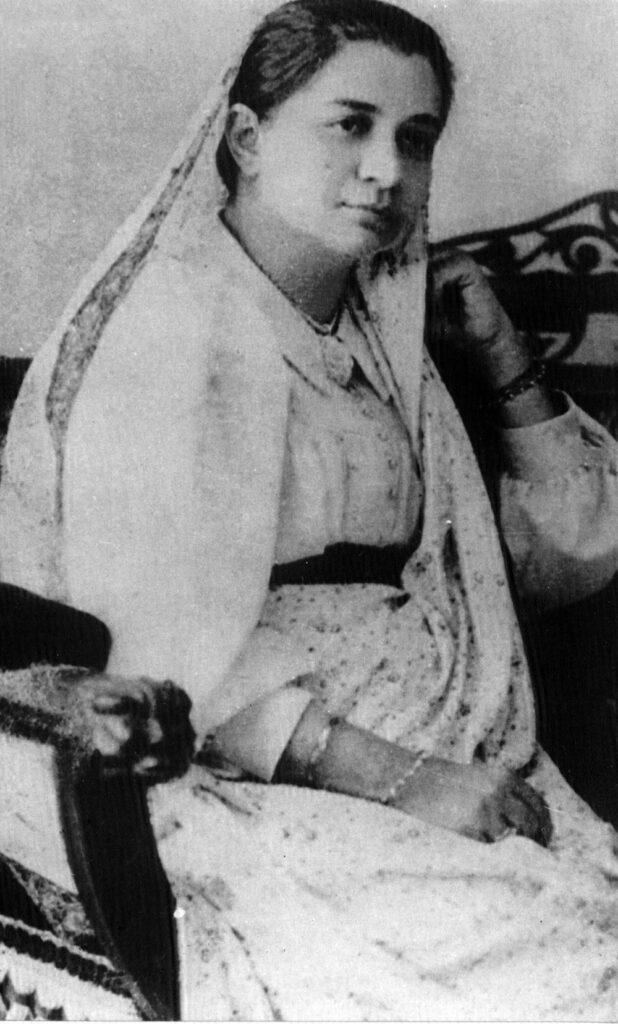
(this portrait is in public domain, collected from Wikipedia)
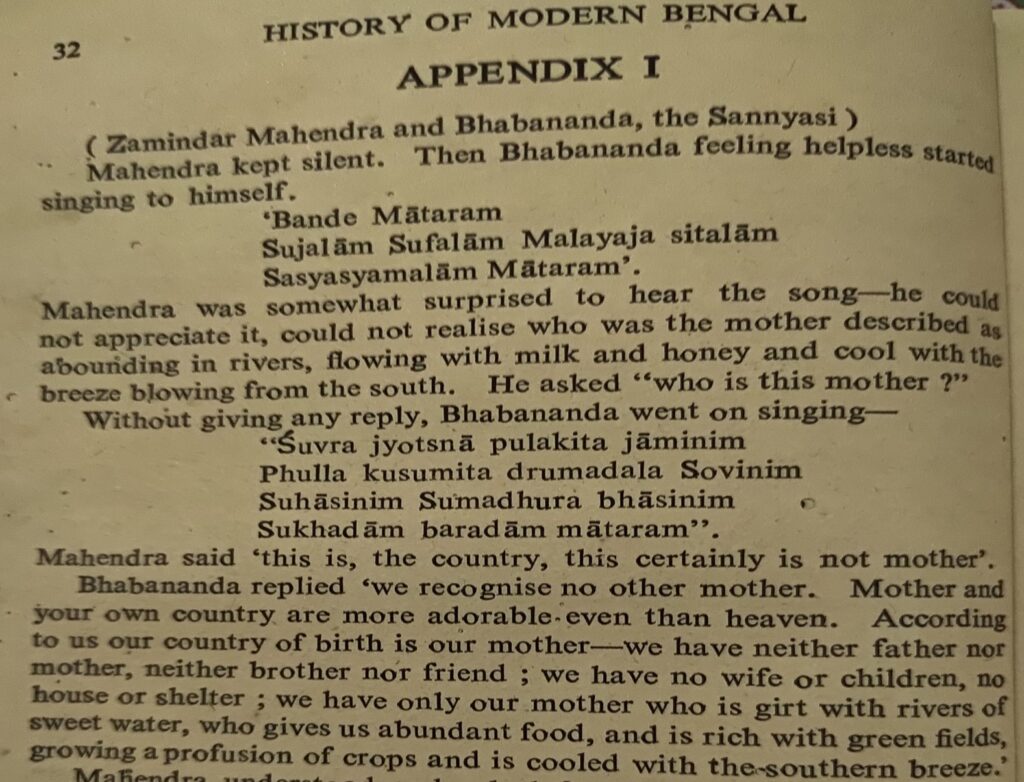
(this image is taken from the book ‘History of Modern Bengal’ written by eminent historian R.C Majumdar, where he is mentioning a conversation written in Anandamath)
Based on the personification of the nation as described in Anandamath, in 1905, eminent painter and Rabindranath Tagores’s nephew, Abanindranath Tagore created the first ever image of Bharat Mata. The artwork depicts a saffron-clad woman, holding a book, sheaves of paddy, a piece of white cloth, and a rudraksha garland in her four hands.
Great social reformer and Swami Vivekananda’s disciple, Sister Nivedita had praised the painting by saying: “From beginning to end, the picture is an appeal, in the Indian language, to the Indian heart. It is the first great masterpiece in a new style. I would reprint- it, if I could, by tens of thousands, and scatter it broadcast over the land, till there was not a peasant’s cottage, or a craftman’s hut, between Kedar Nath and Cape Comorin, that had not this presentment of Bharat-Mata somewhere on its walls. Over and over again, as one looks into its qualities, one is struck by the purity and delicacy of the personality portrayed”.
(Complete works of Sister Nivedita)
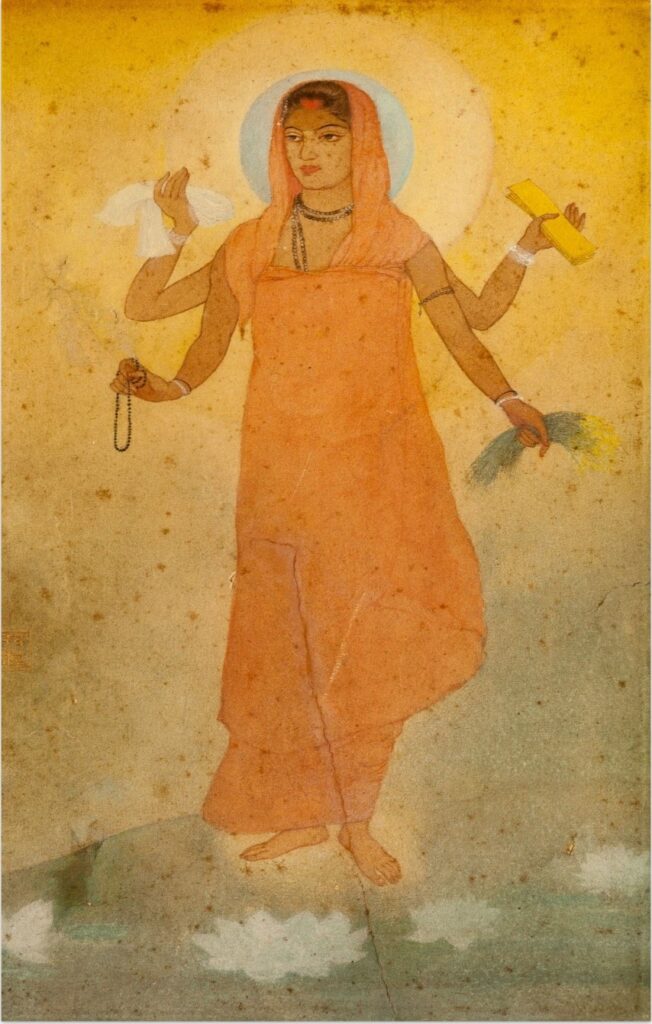
(this image is in public domain, collected from Wikipedia)

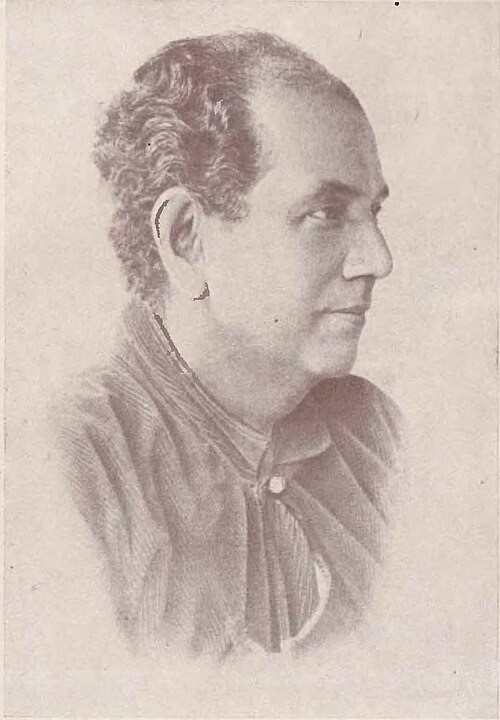
(this image is in public domain, collected from Wikipedia)

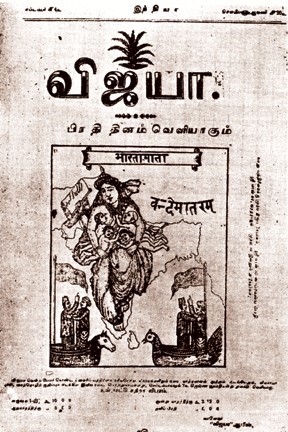
(this image is in public domain, collected from Wikipedia)

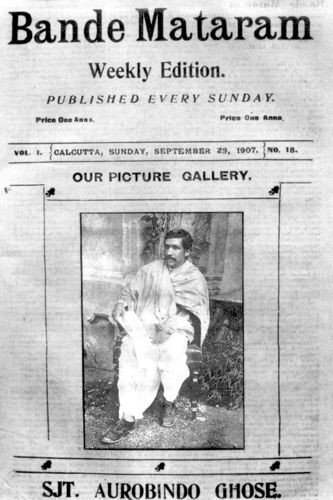
(this image is in public domain, collected from Wikipedia)

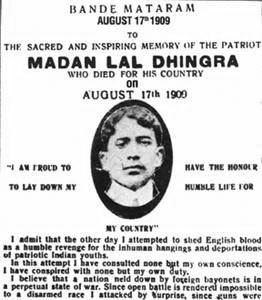
(this image is in public domain, collected from Wikipedia)

